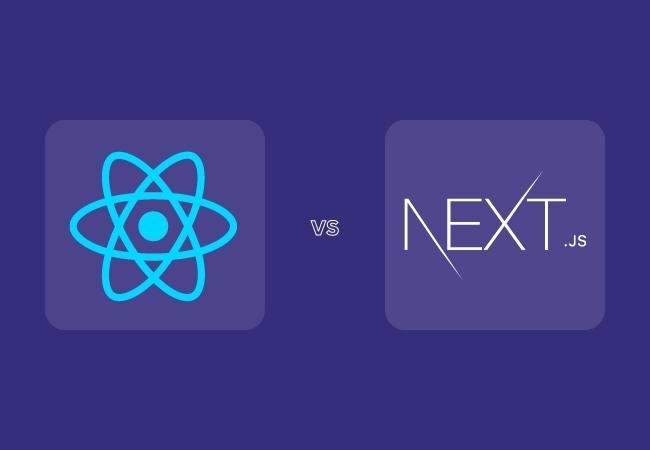Contents
- ReactJS vs NextJS
- Introduction to ReactJS and NextJS
- Core Features and Functionality
- Performance and Optimization
- Server-Side Rendering (SSR) and Client-Side Rendering (CSR)
- Data Fetching Capabilities
- Routing and Navigation
- Developer Experience and Productivity
- Community and Ecosystem
- Use Cases and Project Suitability
- Decision Factors: ReactJS vs. Next.js
- Conclusion
- FAQs
ReactJS vs NextJS
When it comes to building dynamic and interactive web applications, developers are often faced with the decision of choosing the right JavaScript framework.
ReactJS and Next.js are two popular options that offer powerful tools for creating engaging user interfaces. In this article, we’ll delve into the features, benefits, and use cases of both ReactJS and Next.js, helping you make an informed decision based on your project’s requirements.
Introduction to ReactJS and NextJS
ReactJS, developed and maintained by Facebook, is a JavaScript library known for its component-based architecture and efficient rendering.
It allows developers to build reusable UI components and manage state effectively. On the other hand, Next.js is a framework built on top of ReactJS that enhances its capabilities by adding server-side rendering, static site generation, and routing features.
Core Features and Functionality
ReactJS Features
ReactJS offers a component-based structure, making it easier to develop and maintain complex user interfaces.
It uses a virtual DOM to optimize rendering performance, updating only the necessary parts of the actual DOM. This results in a smoother user experience and better performance for applications with dynamic content.
NextJS Features
Next.js extends ReactJS by providing server-side rendering (SSR) and static site generation (SSG) capabilities.
SSR improves initial loading times and SEO, while SSG generates static HTML files for better performance. Additionally, Next.js includes a built-in routing system that simplifies navigation within applications.
Performance and Optimization
ReactJS Performance
ReactJS’s virtual DOM efficiently updates the user interface, reducing unnecessary reflows and repaints. However, performance can degrade in larger applications with frequent updates, requiring optimization techniques to maintain a smooth experience.
Next.js Performance
Next.js enhances performance through server-side rendering and static site generation. SSR reduces time to first paint by pre-rendering pages on the server, while SSG improves loading speed. These features result in better SEO, as search engines can index pre-rendered content.
Server-Side Rendering (SSR) and Client-Side Rendering (CSR)
SSR in ReactJS
ReactJS primarily relies on client-side rendering (CSR), where the initial HTML is sent to the browser, and JavaScript populates the content. SSR can be achieved using third-party libraries, but it’s not a built-in feature.
SSR in Next.js
Next.js excels in SSR, allowing developers to choose between SSR, CSR, and static generation on a per-page basis. SSR enhances SEO and initial loading times, making it suitable for content-heavy applications.
Data Fetching Capabilities
ReactJS Data Fetching
ReactJS leaves data fetching to developers, who often use libraries like Axios or Fetch for asynchronous requests. This gives flexibility but requires manual handling.
Next.js Data Fetching
Next.js simplifies data fetching with built-in methods like getServerSideProps and getStaticProps. These enable data pre-fetching during rendering, enhancing performance and SEO.
ReactJS Routing
ReactJS uses third-party libraries like React Router for routing. While flexible, this adds complexity and can lead to inconsistent routing implementations.
Next.js Routing
Next.js includes a built-in routing system that simplifies navigation. With automatic code splitting, it loads only the necessary JavaScript for each page, improving performance.
Developer Experience and Productivity
ReactJS Developer Experience
ReactJS offers a great developer experience with its component reusability and strong community support. However, setting up SSR and optimizing performance can be challenging.
Next.js Developer Experience
Next.js streamlines development with built-in SSR, SSG, and routing. It provides a smoother out-of-the-box experience, enhancing productivity.
Community and Ecosystem
ReactJS Community
ReactJS boasts a massive community, extensive documentation, and numerous third-party libraries. This ecosystem ensures developers have resources and solutions readily available.
Next.js Community
Next.js benefits from ReactJS’s ecosystem while adding its own features. Its community is growing rapidly, and it has gained traction for its seamless SSR and SSG capabilities.
Use Cases and Project Suitability
When to Choose ReactJS
ReactJS is ideal for applications requiring dynamic user interfaces and complex interactions. It suits projects where SEO and initial loading speed aren’t the primary concerns.
When to Choose Next.js
Next.js shines in projects demanding optimal SEO, fast initial loading, and improved performance. It’s suitable for content-driven websites, blogs, and applications prioritizing user experience.
Decision Factors: ReactJS vs. Next.js
Choosing between ReactJS and Next.js depends on your project’s specific needs. Consider factors like project complexity, performance goals, SEO requirements, and developer experience when making your decision.
Conclusion
In the debate of ReactJS vs. Next.js, there’s no one-size-fits-all answer. Both frameworks have their strengths and are tailored for different use cases. ReactJS offers flexibility and component reusability, while Next.js adds SSR, SSG, and routing capabilities, enhancing performance and SEO. Assess your project’s requirements and goals to determine the framework that aligns best with your needs.
FAQs
- Which framework is better for SEO: ReactJS or Next.js? Both frameworks can achieve good SEO results, but Next.js’s built-in SSR and SSG capabilities make it more favorable for SEO optimization.
- Is Next.js only suitable for static sites? No, Next.js supports SSR, SSG, and client-side rendering, making it suitable for various projects, including dynamic applications.
- Can I migrate a ReactJS project to Next.js? Yes, you can migrate by integrating Next.js step by step, taking advantage of its features while preserving your existing React components.
- Do these frameworks have active community support? Yes, both ReactJS and Next.js have active and growing communities, ensuring ongoing support and development.
- Which framework offers better initial loading performance? Next.js’s SSR and SSG capabilities often lead to faster initial loading times compared to traditional ReactJS CSR.






0 Comments